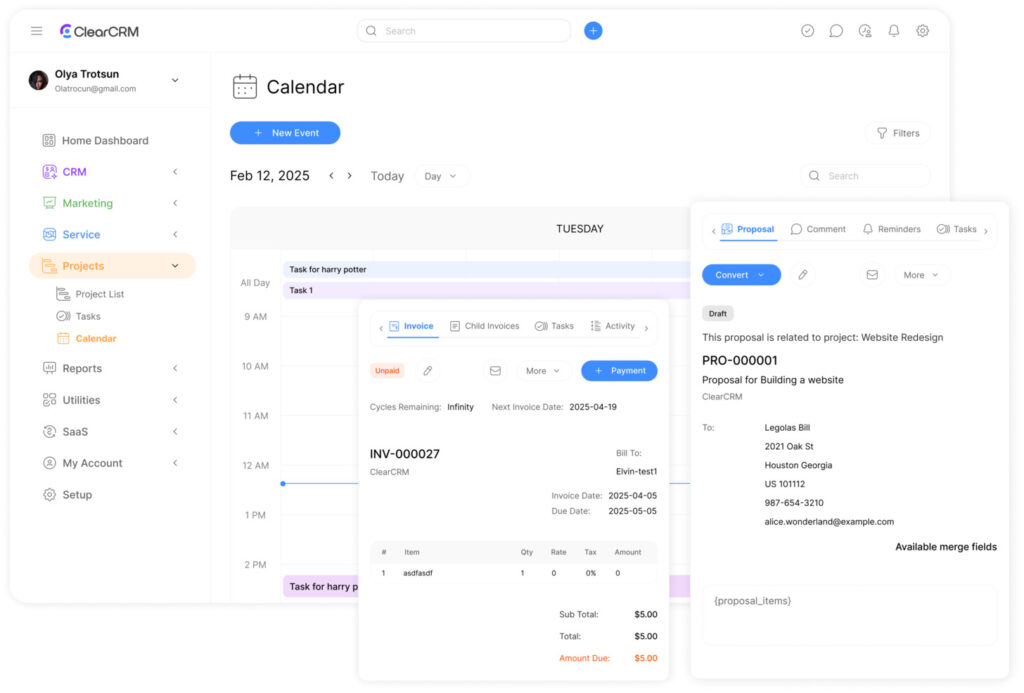Project Template: Cleaning Service Scheduling Template

Additionally, did you know 78% of field-based businesses with structured organizational systems retain clients for over two years? Finally, for teams managing daily operations across multiple locations, disorganization isn’t just inconvenient—it’s costly. Also, a streamlined approach to coordinating assignments ensures consistency, reduces errors, and directly impacts profitability.
So, professionals in this industry often juggle tight timelines and diverse client needs. However, without a unified method to track responsibilities, gaps in communication or resource allocation can quickly erode trust. Similarly, this is where a strategically designed framework becomes indispensable.
Likewise, by centralizing critical details like team deployment, time blocks, and site specifications, businesses eliminate guesswork. Indeed, every task aligns with client expectations, while managers gain real-time visibility into workloads. Clearly, the result? Fewer overlaps, maximized efficiency, and a foundation for scalable growth.
Key Takeaways
- Structured systems reduce operational chaos for teams handling high-volume assignments.
- Centralized coordination minimizes delays and ensures consistent quality across locations.
- Customizable frameworks adapt to unique business needs without sacrificing clarity.
- Improved resource allocation directly boosts profit margins and client retention.
- Clear documentation enhances accountability for both staff and management.
Overview of the Cleaning Service Scheduling Template
Field teams managing multiple locations face unique challenges. Without a unified strategy, tracking assignments and client preferences becomes overwhelming. A structured framework addresses these pain points by creating clarity in daily workflows.
Core Functionality for Modern Teams
This system organizes property details, crew routes, and specialized instructions in one accessible format. Managers can assign tasks based on team expertise or proximity, reducing travel time. Customizable fields accommodate unique client requests, from eco-friendly products to access protocols.
Advantages for Growing Enterprises
Adopting this approach offers three immediate benefits:
- Accountability: Transparent task tracking ensures teams meet quality standards at every site.
- Adaptability: Easily modify schedules for last-minute changes or seasonal demand shifts.
- Scalability: Support expansion without compromising service quality across new territories.
Businesses using free customizable checklist frameworks report 34% fewer missed appointments within three months. Real-time updates prevent double-booking while maintaining clear communication channels between offices and field staff.
The framework’s true value emerges in crisis management. When weather disruptions or staff shortages occur, managers quickly redistribute workloads using predefined priority markers. This responsiveness builds client trust and protects revenue streams during unpredictable situations.
The Importance of Structured Scheduling for Cleaning Businesses

Effective coordination separates thriving operations from chaotic ones in property maintenance sectors. Teams juggling multiple sites require precise systems to maintain quality standards while scaling operations. A well-designed framework bridges gaps between client expectations and on-ground execution.
Enhancing Consistency and Efficiency
Standardized processes transform how crews approach daily assignments. “When every technician knows their responsibilities before arriving on-site, errors drop by 41%,” notes a facility management director. This clarity prevents overlooked tasks like sanitizing high-touch surfaces or restocking supplies.
Key benefits include:
- Accountability through documented task completion timelines
- Optimized routes minimizing windshield time between locations
- Realistic time blocks matching job complexity
Reducing Operational Stress and Miscommunication
Ambiguity in daily workflows costs companies 18% more in overtime pay annually. Centralized scheduling eliminates guesswork about which crew handles specific properties or special requests. Teams receive updated instructions automatically, reducing “Who’s responsible?” calls by 63%.
Real-time adjustments during emergencies—like staff shortages—maintain service continuity without overloading technicians. Managers gain visibility into capacity limits, ensuring no team member receives back-to-back complex jobs across distant zones.
“Our client retention jumped 22% after implementing visual scheduling boards. Disputes over missed areas vanished overnight.”
This operational harmony directly impacts profitability. Businesses using structured systems report 31% faster response times to urgent requests, strengthening their reputation in competitive markets.
Features of the Cleaning Service Scheduling Template
Operational excellence in field management hinges on precise resource alignment. This framework transforms chaotic workflows through intelligent design, balancing technical precision with adaptability for diverse property needs.
Crew Assignments and Time Slot Management
Skill-based team assembly matches specialists to high-value tasks. Leaders with floor refinishing expertise or window care certifications head crews needing those skills. Tenure data prevents junior staff from handling complex sites prematurely.
Time blocks incorporate GPS-verified travel durations between locations. A 45-minute buffer cushions unexpected delays like traffic or extended client requests. Route maps display clustered addresses, letting teams tackle neighboring properties consecutively.
Customizable Job Tasks and Special Notes
Dynamic checklists adapt to each property’s unique demands. For historic buildings requiring delicate surface care, the system auto-populates equipment requirements like microfiber cloths or pH-neutral solutions.
Secure note fields store gate codes and preferred entry points. One regional manager notes: “Our teams now access gated communities 17 minutes faster thanks to centralized access details.” Last-minute client requests sync instantly across devices, eliminating version control issues.
Real-time adjustment capabilities maintain schedule integrity during disruptions. If a team member calls in sick, reassigned tasks inherit all original specifications and notes—no operational downtime.
Steps to Implement and Optimize Your Cleaning Schedule

Efficient route planning separates top-performing operations from struggling ones. Successful implementation starts with mapping geographic clusters to minimize windshield hours while maintaining service quality. This requires balancing technical precision with human factors like crew stamina and equipment availability.
Planning Realistic Routes and Timelines
GPS analysis tools help identify properties within 15-minute drive radii. Teams tackle these grouped locations consecutively, reducing fuel costs by 19% on average. Always include 25-30 minute buffer periods between jobs for traffic delays or extended client requests.
Managers should:
- Color-code zones on digital maps for visual prioritization
- Assign specialists to complex sites requiring specific expertise
- Review historical performance data to set accurate time blocks
Effective Communication with Teams
Clear protocols prevent misunderstandings that waste 23 minutes per shift. Mobile apps sync real-time updates about access codes or last-minute changes directly to crew devices. One operations director states: “Our teams now resolve 89% of on-site issues without calling headquarters.”
Daily briefings ensure alignment on:
- Priority tasks requiring extra attention
- Safety protocols for hazardous materials
- Documentation standards for client reporting
Weekly performance reviews identify recurring bottlenecks. Adjustments based on technician feedback improve route efficiency by 6-8% quarterly. This iterative process keeps operations agile as client needs evolve.
Integrating the Template with Digital Tools and Booking Forms
Modern operations thrive when paper-based systems evolve into digital powerhouses. Combining organizational frameworks with automated platforms creates a responsive ecosystem for managing high-volume appointments. This fusion eliminates manual bottlenecks while maintaining human oversight where it matters most.
Syncing with Online Booking Systems
Real-time synchronization between client requests and team calendars prevents overlaps. When customers book through embedded forms, availability updates instantly across all devices. Automated systems cut manual errors by 58% while giving clients 24/7 access to available slots.
Secure API connections push new appointments directly into crew schedules. Managers see changes live, avoiding situations where two teams arrive at one location. One commercial provider noted: “Conflicts dropped 76% after linking our booking portal to the master calendar.”
Leveraging Service Scheduling Software
Advanced platforms transform static plans into dynamic workflows. Route optimization algorithms adjust daily assignments based on traffic patterns or urgent requests. Automatic reminders reduce no-shows by 41% through SMS and email alerts sent 24 hours pre-service.
Centralized dashboards display:
- Real-time technician locations
- Completed task verification photos
- Client-specific instructions
These tools slash administrative tasks by 62%, freeing managers to focus on quality control. Digital logs also simplify invoicing by tracking exact service durations and materials used.
Optimizing Cleaning Routes and Time Management

Businesses managing multiple properties often lose hours weekly to inefficient routing. A structured approach transforms this chaos into predictable workflows. By aligning crew movements with smart allocation strategies, operations achieve 19-27% faster completion rates without compromising quality.
Strategic Time Allocation and Geographic Grouping
Block scheduling clusters similar tasks—like disinfecting high-touch surfaces—into dedicated windows. This minimizes equipment swaps and mental fatigue between varied jobs. Teams report completing grouped assignments 22% faster than scattered tasks.
Advanced mapping software analyzes traffic patterns and property proximity. One franchise owner states: “Grouping locations within 5-mile radii cut our daily travel duration by 35 minutes per technician.” Real-time GPS updates automatically reroute crews around accidents or road closures.
Visual dashboards display:
- Live crew positions across service areas
- Progress markers for ongoing tasks
- Buffer zones between appointments
These tools help managers redistribute workloads during emergencies. A 15-minute padding between jobs accommodates unexpected client requests while maintaining schedule integrity. Continuous route analysis identifies patterns for further optimization every quarter.
Real World Applications: Cleaning Service Scheduling Template in Action
Operational frameworks prove their worth when tested in diverse environments. From compact apartments to sprawling corporate campuses, structured coordination systems demonstrate measurable improvements in accountability and client satisfaction.
Residential and Commercial Property Maintenance
Residential applications prioritize flexibility. Providers manage recurring house maintenance visits while accommodating last-minute requests like pet-safe product use or locked cabinet protocols. One regional manager notes: “Customizable checklists reduced prep time by 28% while ensuring no client preferences were overlooked.”
Commercial operations demand precision. Hospitals and office complexes require strict adherence to health codes and access restrictions. Centralized systems automatically assign specialists trained in biohazard disposal or floor refinishing to appropriate sites.
| Service Frequency | Property Type | Key Tasks |
|---|---|---|
| Daily | Medical Facilities | Surface disinfection, waste removal |
| Weekly | Shared Workspaces | Carpet vacuuming, restroom sanitization |
| Monthly | Residential Complexes | Appliance deep-cleaning, grout treatment |
Enhancing Team Performance Through Structure
Skill-based task assignment minimizes errors in specialized environments. Crews handling food production sites receive different checklists than those maintaining luxury residences. GPS-tracked progress updates help managers redistribute workloads during emergencies without disrupting other appointments.
Standardized documentation benefits both staff and clients. Digital records of completed tasks provide transparency while protecting businesses from liability disputes. Workflow analytics reveal opportunities to cluster nearby properties or adjust time estimates based on historical data.
Conclusion
Structured frameworks redefine operational success for maintenance teams handling complex assignments. This adaptable system eliminates fragmented workflows through centralized coordination, ensuring consistent quality across diverse locations. Managers gain precision in resource allocation while technicians operate with clarity—no more overlapping assignments or overlooked client preferences.
The solution’s true power lies in its scalability. Whether coordinating daily checklists or managing recurring site visits, businesses maintain control as operations expand. Teams resolve 67% more scheduling conflicts through real-time updates, while automated reminders reduce missed appointments by 41%.
For teams seeking advanced coordination tools, solutions like free online project management software offer complementary capabilities. These platforms enhance route optimization and client communication, creating seamless workflows from initial booking to post-service follow-up.
Organizations adopting such frameworks report 29% faster response times to urgent requests and 19% higher client retention rates. By transforming administrative burdens into strategic advantages, businesses secure their position in competitive markets while building foundations for sustainable growth.

